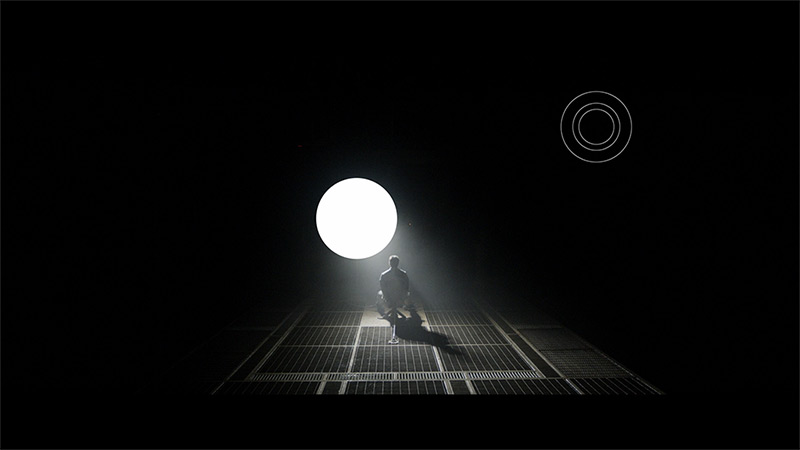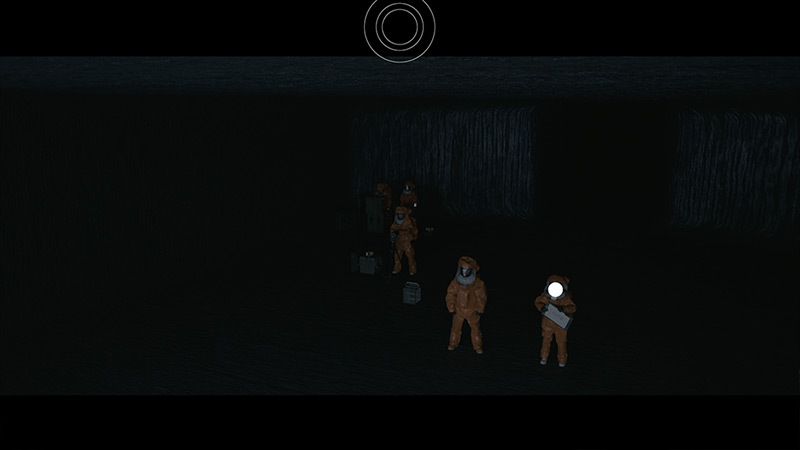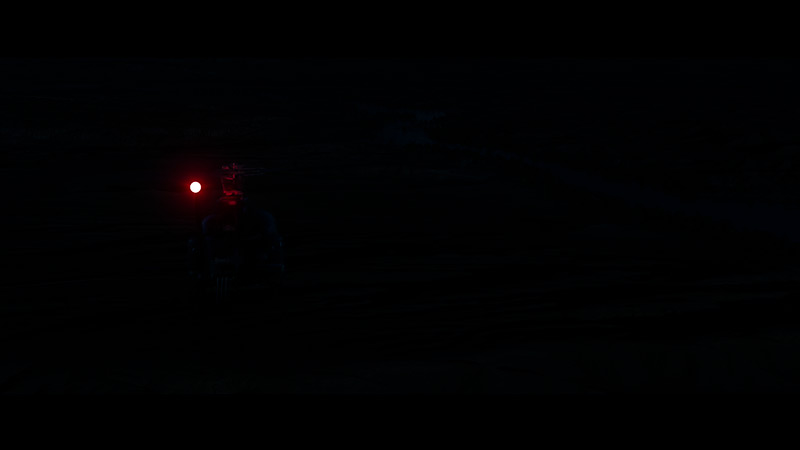- Matching (Score)
- Our verdict
- Competing TVs
- TV appearance
- Where to buy
- Contrast and black detail
- HDR effect quality
- Factory color reproduction
- Color reproduction after calibration
- Smoothness of tonal transitions
- Image scaling and smoothness of tonal transitions
- Blur and motion smoothness
- Console compatibility and gaming features
- Input lag
- Compatibility with PC
- Viewing angles
- TV efficiency during daytime
- TV features
- Playing files from USB
- Apps
- Sound

Complete the survey to find out the result
Panel technology: LCD VA Brand: TCL Resolution: 3840x2160 Operating system: Google TV Model year: 2024
Our verdict
7.6
Overall rating
The TCL C855 is a standout television in the Polish RTV market, showcasing a versatile performance across various applications and excelling in its price range. With Mini LED backlighting, the TV achieves impressive contrast and black levels, resulting in deep, vivid images. Its algorithm effectively maintains black uniformity, minimizing blooming effects, a significant advantage for viewing HDR content.
While the TCL C855 can reach brightness levels of up to 1800 nits, which is commendable, it is worth noting that brightness can significantly drop to around 200 nits when bright but small elements appear on-screen. Additionally, the mid-tone boost can compromise contrast and reduce fidelity to the director's original vision.
For gamers, the TCL C855 shines brightly, offering extremely low latency and high-quality performance thanks to its full implementation of HDMI 2.1 features. The inclusion of the Google TV operating system adds to its appeal, providing nearly limitless options for application installation, including support for APK files from outside the official store.
The TCL C855 is an excellent choice for those seeking a reliable and versatile television. While it may have some drawbacks, its overall image quality, gaming performance, and advanced operating system make it a strong contender in the market.
Advantages
Wide Range of Built-In Applications
High Contrast and Deep Blacks
Exceptional HDR Performance in Bright Scenes
Impressive Brightness Levels
Image Quality Comparable to Higher-End Models
Disadvantages
Poor viewing angles
Poor factory colour reproduction (to be improved through calibration)
Movies and series in UHD quality
7.4
Classic TV, YouTube
7.0
Sports broadcasts (TV and apps)
6.8
Gaming on console
8.8
TV as a computer monitor
8.6
Matrix brightness
7.4
Utility functions
7.1
Apps
10.0
Sound quality
7.2
Complete the survey to find out what fits your preferences
Competing TVs in this price range
TV appearance
HDMI inputs: 2 x HDMI 2.0, 2 x HDMI 2.1 (48Gbps) Other inputs: RCA (Chinch) Outputs: Toslink (Optical audio), eARC (HDMI), ARC (HDMI) Network Interfaces: Wi-Fi 2.4GHz, Wi-Fi 5GHz, Ethernet (LAN) 100Mbps








Where to buy
No links
Contrast and black detail
8.6/10
Funkcja lokalnego wygaszania: Tak, ilość stref: 1344 (48 x 28)

Contrast between the black background and the bright spotlight illuminating Jack. Scene from the movie Oblivion (Universal Pictures).
Result
∞:1

Contrast between the glare on the chameleon's skin and the black near the edge of the screen below. Scene from the Spears&Munsil test disc.
Result
176,000:1

Contrast between the reflection on the helmet and the black on the black film strip. Scene from the movie Arrival (Paramount Pictures).
Result
54,000:1

Contrast between the actress's face and the black film strip at the top edge of the TV. Scene from the movie Gravity (Warner Bros. Pictures).
Result
30,500:1

Contrast between the colorful balloon and the black slice between the falling objects. Scene from the Pioneer Kuro test disc (2008).
Result
13,700:1
The TCL C855 features a high-contrast VA matrix, achieving an impressive ANSI contrast ratio of 5238:1 without dimming. This level allows for very good black levels. Furthermore, the panel incorporates multi-zone Mini LED backlighting, divided into 1344 independent dimming zones for the 65-inch model. Such a configuration yields excellent results in our tests. Notably, TCL is among the few manufacturers offering such advanced panel specifications at a reasonable price, unlike the traditional big four brands. In the majority of scenes we evaluated, the performance was impressive, particularly in the first three tests; even in the third, with a ratio of 54,000:1, the black level and contrast were far from weak, demonstrating satisfactory results. However, performance does dip in two specific scenarios: scenes with movie strips and when the screen contains many elements surrounded by black. While the last test scene maintained excellent contrast, the final scenario revealed some blooming in the blacks. A frame from the movie "Oblivion" showcased the TCL C855's capabilities, with black levels that can rival those of OLED screens—a notable achievement. The television also demonstrates commendable light separation, which is no small feat. In our flagship scene from "Revenant," the contrast was equally impressive, although some loss of detail in the blacks across the first, second, and third planes was evident. The backlight control algorithm effectively minimizes halo and blooming effects, which is praiseworthy. However, it's important to note that very small elements, like stars, can occasionally be completely dimmed by the TCL C855.
Halo effect and black detail visibility:


HDR effect quality
6.5/10
Supported formats: HDR10, HDR10+, Dolby Vision, Dolby Vision IQ, HLG Color gamut coverage: DCI P3: 97.0%, Bt.2020: 79.0%
Luminance measurements in HDR:

The measured point is the setting sun against a bright sky. Scene from the movie Life of Pi (20th Century Fox).
Result
1472 nit

The measured point is the moon against a dark, starry sky. Scene from the movie Life of Pi (20th Century Fox).
Result
445 nit

The measured point is the flashlight on the rifle, which shines directly at the camera. Scene from the movie Gemini Man (Paramount Pictures).
Result
754 nit

The measured point is the tail light of a helicopter flying at night. This is a very small light point, the essence of the HDR effect. Scene from the movie Sicario 2: Soldado (Lionsgate).
Result
237 nit

The measured point is the sun visible directly between the clouds. The scene is very bright and should blind the viewer as in nature. Scene from the movie The Meg (Warner Bros. Pictures).
Result
1820 nit
The TCL C855 delivers a highly varied HDR effect. At times, the television truly excels, while at other moments, it appears reminiscent of a low-end model equipped with FALD backlighting. Inconsistency is frequently found with this brand, so it didn’t come as a surprise. The first and last scenes, which feature large light elements, are nothing short of spectacular, boasting brightness levels of 1470 and 1820 nits, respectively. Such brightness can make viewers squint their eyes, allowing them to feel the extraordinary dynamism of the scene. It genuinely immerses the audience, creating a sensation of being inside the movie itself. However, the situation shifts dramatically when small or subtle elements with high luminance appear against a dark background. In these instances, the TCL C855 significantly reduces brightness to levels as low as 240 nits to mitigate halo effects. This reduction is disappointing, as it can make the movie appear as if it was not filmed in HDR. Despite these shortcomings, the HDR effect on the TCL C855 enhances the viewing experience during dynamic scenes, making it feel more engaging and allowing the viewer to feel part of the action. Even with smaller high-luminance elements, the television retains details without excessive dimming. Additionally, the TCL C855 adjusts image brightness according to scenes with rich detail, further enhancing viewing comfort.
Scene from the movie “Pan” (about 2800 nits)

Scene from the movie “Billy Lynn” (about 1100 nits)

During challenging film scenes, the TCL C855 demonstrates impressive performance, albeit with some caveats. For instance, in the first frame from the film "Mr.," the effective dynamic tone mapping function ensures that details in the bright areas of the image remain visible and do not get lost under high brightness levels.
However, when evaluating a more varied scene from "Billy Lynn," while the performance can be considered satisfactory, there are noticeable issues. A slight boost in the midtones leads to a drop in contrast, and more critically, there is a complete colour misalignment during the fireworks explosion. These shortcomings highlight that, despite its strengths, the TCL C855 can struggle with certain elements of colour accuracy in dynamic scenes.
HDR luminance chart:
The most widely used HDR format in the market is HDR10, which unfortunately lacks dynamic metadata. This makes the effectiveness of the tone mapping algorithm implemented in the television crucial. The TCL C855 boasts one of the better algorithms, and its high brightness enhances the efficiency of the dynamic tone mapping (DTM) feature, allowing background details to remain visible. When the tested unit receives an HDR format with dynamic metadata, such as Dolby Vision, improves the image quality significantly. No matter how small, every detail becomes easily perceptible, providing an enriched viewing experience highlighting the television's capabilities.
Static HDR10

Dynamic: Dolby Vision

Factory color reproduction
5.2/10
The best factory mode for the TCL C855 is the "Film" setting, and all our tests were conducted using this mode. However, like many predefined modes, it has flaws that should be addressed to achieve an image closer to the producer's original vision. In our examination of the colour characteristics for both SDR and HDR materials, issues were found.
Focusing first on SDR content, there is a noticeable dominance of green in the white balance, which leads to an unpleasant greenish tint across the entire image. The gamma chart, crucial for image contrast, shows a significant deviation from the reference line marked at 2.4. Initially, there is a pronounced spike in the measured value, resulting in an over-contrasted image where details can merge into a dark blob. This condition persists for nearly 20% of the chart before it dips below the reference line, causing the image to brighten and resulting in a substantial drop in contrast.
In HDR materials, the factory mode performs somewhat better; the white balance appears more balanced overall, although the green tint resurfaces in the latter half of the spectrum. When we look at the Electro-Optical Transfer Function (EOTF) curve—unlike gamma, which reflects contrast—we identify two main errors: the darkest scenes are too dark, while the brightest ones become overexposed. This discrepancy was evident in our review of the scene from the movie "Pan," further illustrating the TCL C855's HDR performance issues.
Color reproduction after calibration
6.9/10
TCL, like most manufacturers, offers advanced calibration tools within its televisions. These include both 2-point and 20-point adjustments for grayscale, as well as a comprehensive colour management system. As a result, we achieved impressive results in SDR materials, bringing the image significantly closer to the reference standard. We successfully eliminated both the green tint and the gamma issue, although a slight "kink" at the very beginning of the gamma curve still persists.
In contrast, the situation with HDR materials was less favourable, as the TCL C855 did not allow for precise modelling. We were only able to make minor adjustments to the EOTF curve while significantly enhancing the overall colour accuracy. This limitation suggests that while calibration tools are effective, they may require further refinement for optimal HDR performance.


Smoothness of tonal transitions
9.2/10
Another important aspect of assessing image quality is tonal transitions. To achieve a clean image free from posterisation effects, a television must employ highly effective algorithms for smoothing colour gradations. We must acknowledge that the algorithm used in the TCL C855, known as "Gradual Smoothing," ranks among the best we've had the opportunity to test. In nearly every scene, the performance is impressive, leaving little room for criticism. A prime example of this capability is the scene from "The Green Knight," which poses a challenge due to the multitude of fine and subtle transitions in the fog. The C855 successfully smooths out the details within this scene, allowing the viewer to fully appreciate its suspenseful atmosphere. The only instance where slight posterization is noticeable occurs in a frame from "The Green Knight," where the reds in the upper left part of the screen create a contrasting effect.








Image scaling and smoothness of tonal transitions
5.1/10
Smooth transition function

Image without overscan on the SD signal

Once again, we will take a look at the function of smoothing tonal transitions, but this time also image scaling. The latter is particularly important when watching materials of lower quality, such as some television programs or older films. We will focus on the function responsible for tonal transitions. Interestingly, just like in the scenes from the previous test where it performed excellently and smoothed out practically all the inconsistencies, here it had issues. Using the menu responsible for the operation of this function, we found that no setting—even the strongest—was helpful.
Image scaling in TCL C855 is defined as one of the best we have had the opportunity to test so far. The image is sharp, but in a way that could be described as natural to our eye. Even small, fine branches do not have jagged edges, and there is no white halo around figures, a characteristic of weaker scaling systems.
Blur and motion smoothness
8.3/10
Maximum refresh rate of the panel: 144Hz
Film motion smoothing option: Yes
Blur reduction option: Yes
BFI function 60Hz: Yes, 60Hz (image flickers)
BFI function 120Hz: Yes, 120Hz
Brightness drop with BFI: 51%

The maximum refresh rate you can set on the TCL C855 is 144 Hz. Naturally, this is only possible after connecting the TCL C855 TV to a very powerful PC. Otherwise, we will be operating at a maximum refresh rate of 120 Hz, which is recommended if we want to watch primarily sports or materials with a lot of motion dynamics. For those who require high image fluidity, the manufacturer has implemented a multi-stage motion smoother. It is divided into two separate sliders which control the sharpness of moving images (Motion Blur Reduction) and flicker (Flicker Reduction). Both sliders can be adjusted from 0 to 10, with each level affecting the degree of fluidity, so everyone can find their sweet spot. We present a setting that allows for slight smoothing without the soap opera effect. The matrix of the TCL C855 features a very good response time. This is particularly important since VA panels often struggle with the so-called ghosting effect, where a black halo can be observed behind a fast-moving object. where a black halo can be observed behind a fast-moving object.
Blur (native resolution, maximum refresh rate):



Blur (BFI function enabled):



In discussing motion fluidity, it's important to highlight BFI technology (Black Frame Insertion), which inserts a black frame between the frames of a film. This technique aims to "reset" the retina, thus enhancing image sharpness. The manufacturer has effectively implemented this solution, resulting in minimal flickering compared to competitors' products. As a result, it performs well, and the sharpness of fast-moving images remains high. However, there are some downsides, including edge duplication and a significant drop in brightness. Overall, this feature is primarily suited for specialized users who prioritise motion clarity.
Console compatibility and gaming features
9.8/10
ALLM: Yes
VRR: Yes
VRR range: 48 - 144Hz
Dolby Vision Game Mode: Yes
Correct implementation of HGIG: Yes
1080p@120Hz: Yes
1440p@120Hz: Yes
4K@120Hz: Yes
Game bar: Yes
G-Sync: Yes


The TCL C855 TV has fully-featured HDMI 2.1 ports, boasting a full bandwidth of 48 Gb/s. During our testing, we confirmed the seamless operation of all functions included in this connection standard. As highlighted, all checkboxes are illuminated in green, a feature that will undoubtedly be appreciated by gamers, whether on consoles or those using the TV as a computer monitor. Additionally, the TCL C855 supports both AMD FreeSync and NVIDIA's G-Sync, which can be easily activated in the graphics card settings. Those with powerful configurations can feed a 144 Hz signal to the C855, which handles this effortlessly. It is also worth noting the implementation of the HGIG mode, which can be excessively bright due to the shortcomings of the "Game" mode, making proper configuration on the screen challenging. Fortunately, the TV excels with the Dolby Vision format.
TCL, as one of the pioneering manufacturers, has equipped its televisions with a special GameBar, allowing for extensive adjustment of settings "on the fly" without the need to exit the game. This feature includes options like an additional crosshair grid, black level correction, and settings designed for individuals with disabilities. The image showcases the next generation of this solution.
In summary, the TCL C855 TV is an ideal choice for those seeking a screen for all forms of electronic gaming. With comprehensive features supporting such entertainment, it provides an extremely engaging experience. It is also important to emphasise that it maintains very low input lag, regardless of the selected settings, including when using the Dolby Vision HDR format.



Input lag
9.8/10
The input lag of the TCL C855 is impressively low across all scenarios. Even the most dedicated gamers will appreciate the minimal input lag of just 7 ms at demanding 4K 120 Hz settings with HDR. Furthermore, this lag remains consistent when enabling Dolby Vision HDR, which is not always the case with competing models. As such, the TCL C855 merits the highest rating and recommendation.
| SDR | HDR | Dolby Vision |
|---|---|---|
| 1080p60: 16 ms | 2160p60: 16 ms | 2160p60 DV: 17 ms |
| 1080p120: 7 ms | 2160p120: 7 ms | 2160p120 DV: 9 ms |
| 2160p60: 16 ms | ||
| 2160p120: 7 ms |

Compatibility with PC
8.6/10
Chroma 444 (maximum resolution and refresh rate): Yes
Font clarity: Good
Readability of dark text and shapes: Good
Input lag in PC mode (4K, maximum refresh rate): 16ms
Matrix subpixel arrangement: BGR

When connected to a computer as a monitor, the TCL C855 performs exceptionally well. This is largely due to its very low latency time along the mouse-eye-screen line and excellent font readability, achieved through a chroma 4:4:4 at all resolutions, including 4K@144Hz.
The subpixel layout is BGR, which does not negatively affect usage in the Windows environment. However, this situation may change when using macOS or other software that cannot adjust fonts to accommodate this subpixel layout.
Viewing angles
3.5/10
Brightness drop at an angle of 45 degrees: 73%
A well-known drawback of VA panels without an angle coating is their poor performance regarding viewing angles. This holds true for the TCL C855, where even a slight deviation from the central axis results in noticeable image fading and colour degradation.
TV efficiency during daytime
7.4/10


Matrix coating: Glare
Reflection suppression: Average
Black levels during daytime: Good
The glossy finish of the TCL C855 panel prevents it from achieving the highest rating for daytime viewing performance. However, this finish contributes to impressive black levels during the day. The high brightness in SDR material makes the actress's face stand out prominently against reflections. A downside of this panel is that light falling directly on the screen tends to "spill" rather than being contained in one area. Generally speaking, if sunlight does not directly hit the panel, the TCL C855 remains a solid choice for well-lit rooms.
Matrix brightness
Average luminance SDR
TCL 65 C855: 910 cd/m2
TV features
7.1/10
System operacyjny: Google TV
TV reception: DVB-T, DVB-T2, DVB-S, DVB-S2, DVB-C
Recording to USB (terrestrial TV): No
Recording programming: No
Picture in Picture (PiP): No
Screen mirroring (Windows Miracast): Yes
AirPlay: Yes
Voice search in native language: Yes
Ability to connect a keyboard and mouse: Yes
Possibility to connect Bluetooth headphones to the TV: Yes
Possibility to simultaneously use Bluetooth headphones and the TV speaker: Yes
Audio only mode: No
RF remote control (no need to aim at the screen): RF
Backlit remote control: No
Teletext: Yes




The TCL C855 operates on the Google TV platform, which offers a significant advantage over TVs with proprietary systems from other manufacturers, where installing applications from a USB drive can often be challenging or impossible. With Google TV, users can install virtually any application, whether from the official store or directly from online repositories via APK files.
This system also provides various conveniences in terms of control. Users can connect a keyboard with a touchpad, making it easier to enter queries. Additionally, thanks to integration with Google, voice control features via the remote work very well, although minor issues may occasionally arise with function translations. It's worth noting that Google TV regularly receives updates that enhance functionality and introduce new options. However, according to reports from users of older models, the software can sometimes have its off days, leading to occasional performance hiccups.
In summary, Google TV is currently one of the most popular systems on the market. Thanks to its efficient CPU, it runs very smoothly, avoiding freezing and stuttering for the majority of usage. This makes it an excellent choice for those looking to fully utilise the capabilities of the TCL C855 and who appreciate the openness of the system.
Playing files from USB
9.2/10

| Maximum photo resolution: | Supported photo formats: |
|---|---|
The default file player on the TCL C855 performs admirably with nearly all the media formats tested. Most video formats are supported, providing a versatile viewing experience. However, a notable drawback is the lack of functionality to change font colours. When it comes to photo playback, the TV handles high-resolution images well, but it is worth mentioning that it does not support Apple's HEIC or SVG file formats.
On the audio front, the TCL C855 manages to play various audio files without any issues, although it's unlikely that many users are reliant on formats like AIFF or DSD64. A significant advantage of the C855, alongside its operating system, is the ability to download alternative media players from the app store, ensuring compatibility with a wider range of file types.
Apps
10/10


















Sound
7.2/10
7.2/10
Subjective sound quality
Dolby Digital Plus 7.1
Dolby True HD 7.1
Dolby Atmos in Dolby Digital Plus (JOC)
Dolby Atmos in Dolby True HD
DTS:X in DTS-HD MA
DTS-HD Master Audio
When evaluating the sound quality of the TCL C855, several key aspects come into play, such as clarity, balance, and the absence of dominant frequencies. In this case, the sound performance is commendable; it is well-balanced and does not evoke any negative sensations, providing an overall good audio experience.
For those who utilise a home theatre system, the TCL C855 supports a wide range of audio codecs, including the two most significant ones: DTS-HD Master Audio and Dolby Atmos. This support ensures high sound quality, making it a suitable choice for users seeking an enhanced audio experience.


